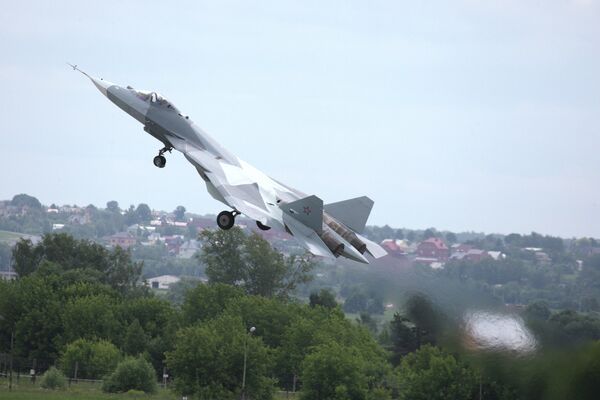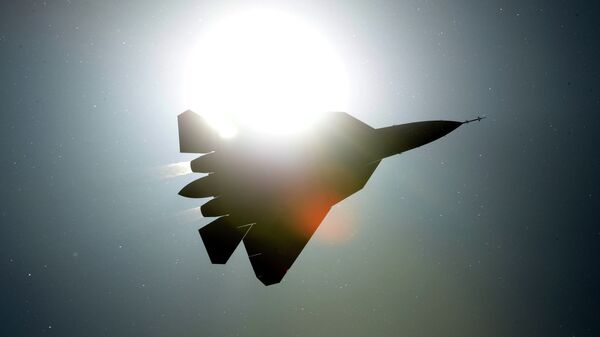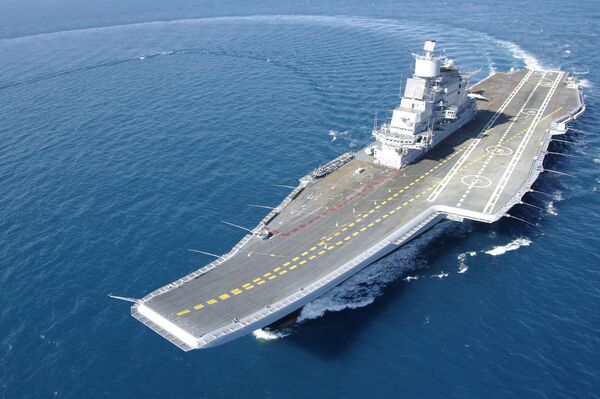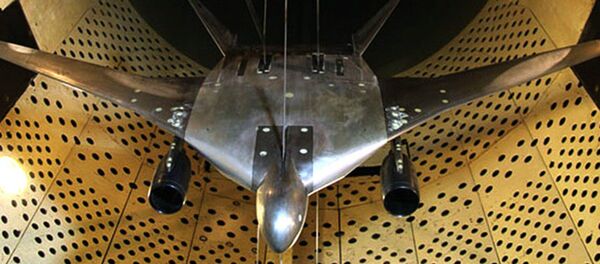Only last month, Vladimir Drozhzhov, deputy director of Russia's Federal Service for Military-Technical Cooperation, the agency charged with regulating military-technical cooperation with other countries, told Sputnik that Russia and India had agreed on a draft contract for the joint development of a new fifth-generation aircraft, the Fifth Generation Fighter Aircraft (FGFA) derived from Russia's Sukhoi T-50 (PAK FA) stealth multirole fighter.
"This is mandatory. A high-level committee headed by an Air Marshal from the Indian Air Force, which includes an Indian Institute of Technology-Kanpur professor and former chiefs of Hindustan Aeronautics Limited and National Aerospace Laboratories, is examining all these aspects," a source told the newspaper. "The government will take a call after the report is submitted in April," the source added.
The source complained that Sukhoi's previous contract with Hindustan Aeronautics – involving the delivery of 272 Su-30MKI twinjet multirole air superiority fighters, did not provide for technology transfer; Delhi considers this to have been a miscalculation.
The FGFA project is part of the Make in India initiative launched by Prime Minister Narendra Modi in 2014. Under the deal, Russia's Sukhoi Company and Hindustan Aeronautics Limited would develop an advanced derivative of the T-50 (PAK FA) fifth generation fighter. The multi-billion dollar project is set to include 43 improvements over the T-50, in areas including engine thrust, stealth capabilities, advanced sensors and onboard avionics, as well as supercruise (sustained supersonic flight) capability. Last year, the two countries agreed to commit $4 billion each to R&D, prototype development, testing and infrastructure for the 127 fighters which India expects to cost a total of $25 billion.

Russian experts are divided over the implications of Delhi's ultimatum.
Speaking to Radio Sputnik, Col. (ret) Andrei Golovatyuk, military observer and senior member of the Russian Officers Union, explained that the issue of technology transfer in general is an extremely sensitive one.
"By transferring our technology, we are creating the conditions in the recipient country to stop purchasing our military equipment over the next 10-15 years, and to use our technology to develop its own instead," the officer said. "This is about the same thing that happened with China in the past. In the 1950s and 1960s, we gave them a number of military technologies, and subsequently Beijing made a huge step forward in the development of weapons and military equipment."
"Something similar could now happen with India," Golovatyuk said. "Of course, this is a very delicate issue – both from the diplomatic and the military-technical perspective. If these are today's technologies, and we have next generation technologies in the wings, then it may be advisable to consider their transfer." Otherwise, the logic is that perhaps Moscow should hold off making the transfer.
"India," Golovatyuk stressed, "occupies one of the leading positions in the purchase of Russian arms and military equipment, and we cannot lose this market. Therefore, we should weigh everything very carefully when making a decision."
For his part, prominent Russian military observer Viktor Litovkin is convinced that Delhi's ultimatum is just a bargaining tactic. India, he noted, "simply doesn't want to pay for a fifth-generation aircraft, and is coming up with all sorts of excuses. In fact, they are demanding that Russia give them all the technology for the plane, which can then be built in India's own plants. That is, they want ultra-modern equipment and technology for a hill of beans."
Litovkin stressed that Sukhoi need not concern themselves too much with the Indian side's demands, pointing out that Russia's Indian partners have always held to the tactic of bargaining for the lowest-possible price.
"Some time ago, they bought our aircraft carrier [the Baku, now known as the INS Vikramaditya] for the price of scrap metal," the expert recalled. They wanted us to make it into a super battle-ready warship. We explained that an aircraft carrier is an expensive combat system, and that it was impossible to acquire it for a red cent. They made a lot of noise about it, but ultimately ended up paying."
Ultimately, Litovkin too said that troubles or not, cooperation with India brings out the best in Russian designers. "In general, we should be forthcoming, listen to their complaints, but calmly proceed to do our work," the expert noted. "Yes, on the other hand, they can be cranky, but on the other hand, it's good for us: they force us to bustle about, to think about how to fulfill the tasks that they set for us."
Finally, Mikhail Alexandrov, a senior expert at the Center for Military-Political Studies at the Moscow State Institute of International Relations, pointed out that full-scale technology transfer is outside the practice of any country engaged in the creation of advanced weaponry.
"No state engages in the export of cutting edge weapons systems– especially systems which are still under development. And no one ever sells the technology behind these systems – it simply isn't done," the expert stressed.
Moscow, Alexandrov noted, must clearly and calmly emphasize to its Indian partners "that there are no other countries – the French or the Americans included, willing to share their tech and the intricacies of their aircraft [with India]. I think it's to Delhi's advantage to deal with Russia as things are. We offer them more than other countries, including participation in joint projects, which offers a chance to learn, plus the opportunity to assemble the planes themselves in Indian plants. I do not believe it is worth going beyond that."





